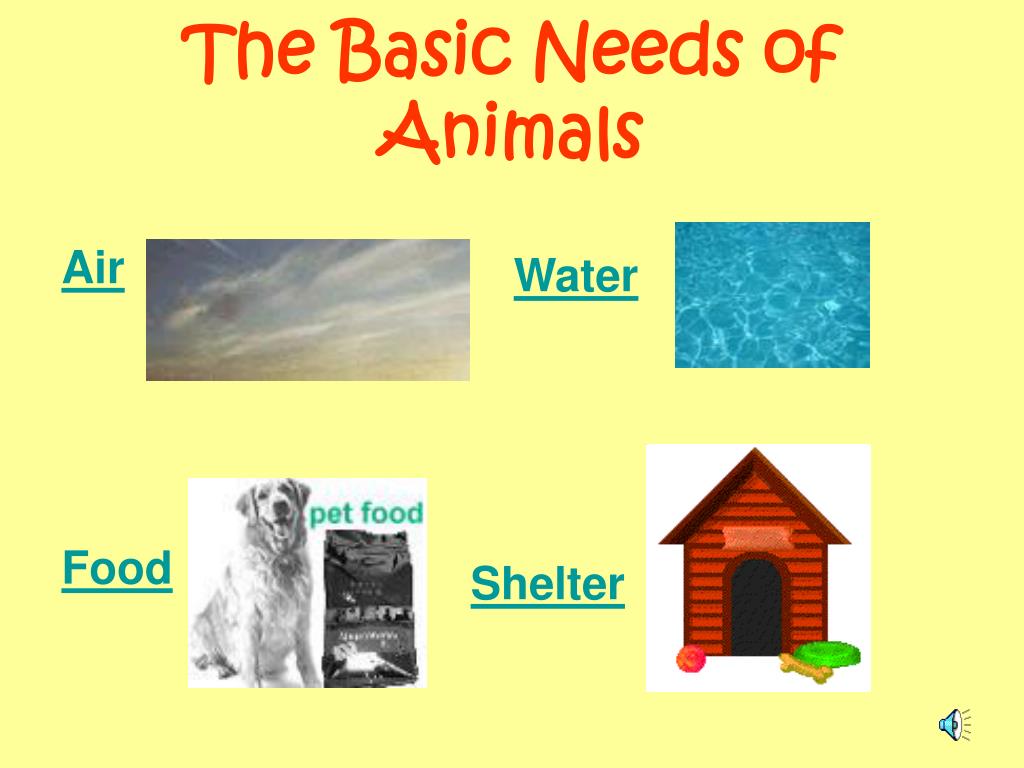In our fast-paced modern society, the elemental needs of animals are often relegated to mere afterthoughts. While we may diligently provide food and shelter, there are deeper, more nuanced requirements that remain overlooked. This oversight can lead to profound consequences for the well-being of various species. By probing into these needs, we can develop a more holistic understanding of animal welfare and create a paradigm shift in how we view our fellow beings.
Physical Needs: More than Just Food and Shelter
The narrative surrounding an animal’s physical needs often begins and ends with food and shelter. However, the intricacies of their requirements are far more complex. Animals, like humans, are susceptible to stressors that impact their overall health. Nutritional deficiencies can stem not only from an inadequate diet but also from the lack of enrichment in their surroundings. Many domesticated pets, for example, lead sedentary lives without the opportunity for exercise or mental stimulation. The failure to provide adequate opportunities for physical activity can lead to obesity, behavioral issues, and chronic health problems.
Moreover, the type of environment in which an animal resides plays a significant role in its overall well-being. For instance, captive wildlife deprived of their natural habitat exhibit signs of distress and maladaptive behaviors. Environments that mimic their natural surroundings—consider naturalistic enclosures in zoos—promote mental and physical health much more effectively than sterile cages. Easing the stress of confinement not only enhances the animal’s quality of life but may also facilitate conservation efforts by fostering breeding and natural behaviors.
Social Interaction: The Importance of Companionship
Another cornerstone of animal welfare is the need for social interaction. While we often recognize this need in pets, such as dogs and cats, it is frequently neglected in other species. Social structures are innate to many animals, particularly those that are naturally gregarious, like elephants and dolphins. Isolation can lead to detrimental behavioral problems. For instance, elephants in captivity often exhibit “stereotypic behaviors,” such as swaying or pacing, indicative of severe psychological distress.
Human interaction also bears significance; however, substituting human companionship for social interactions with their own species can often be inadequate. Integrating species-specific companions fosters natural behaviors and instills a sense of security, which is often paramount for good mental health. Providing opportunities for animals to engage with peers promotes natural social hierarchies and behaviors that would be observed in the wild.
Aesthetic and Environmental Enrichment: Satisfying Instinctual Behaviors
In addition to social interaction, the aesthetic and environmental dimensions of an animal’s habitat are profoundly significant. Animals, particularly those in captivity, suffer when deprived of stimuli that allow them to engage their instincts. This form of environmental enrichment needs to include varied and stimulating surroundings. For example, enrichment can involve climbing structures for primates, toys that mimic foraging, or even changes in the scenery. Such adaptations cater to their curiosity, intelligence, and physicality.
Wild animals often experience vast territories filled with diverse sights, sounds, and smells which serve to stimulate their minds. Humans can recreate this complexity through thoughtful design of living spaces that provide challenges and opportunities for exploration. By ensuring that an animal’s environment is dynamic, we not only improve its mental health but also adhere to its instinctual urges.
Understanding and Addressing Emotional Needs
Animals are not just biological entities; they possess emotions, feelings, and complex psychological profiles. Often, emotional needs are disregarded; however, they are critical to an animal’s welfare. Anxiety, fear, and trauma can dramatically alter an animal’s behavior. While many administrators and caretakers focus on visible physical ailments, emotional distress can lead to health issues that may not be immediately obvious.
For instance, rescue animals frequently exhibit signs of previous trauma. Such issues may require specialized handling and understanding. Implementing training that utilizes positive reinforcement can help alleviate anxieties and foster a trust-based relationship between animal and caretaker. Recognizing the animal’s unique emotional landscape is vital; it requires attentive observation and a commitment to nurturing trust.
Respecting Individuality: Recognition of Personal Traits
Every animal, like every human, is unique. They have distinct personalities, preferences, and temperaments. A horse, for instance, may thrive on interaction with specific companions while another may prefer solitude. Yet, often in captivity, animals are treated as mere specimens rather than individuals with their own needs and desires. Recognizing these differences and adapting care accordingly can vastly improve an animal’s quality of life.
Educational initiatives aimed at raising awareness about the individual needs of various species can lead to profound changes within communities. Comprehensive understanding and respect for animal individuality can help create environments where animals feel secure and understood, ultimately benefiting their social and emotional well-being.
Conclusion: A Call to Action
It is essential to reevaluate our approach to animal care by acknowledging the often-overlooked needs of our fellow creatures. By recognizing that animals possess a rich tapestry of physical, social, emotional, aesthetic, and individual needs, we can foster a deeper comprehension of their welfare. Moving beyond the rudimentary provisions of food and shelter into the more intricate realms of existence will not only enhance their quality of life but will also enrich our understanding and bond with the animal kingdom.
To effect meaningful change, we must advocate for the implementation of these insights into daily practices, whether that be in homes, shelters, or conservation efforts. This shift in perspective is not merely beneficial; it is imperative to ensure that the beings we share the planet with receive the respect and care they rightfully deserve.








